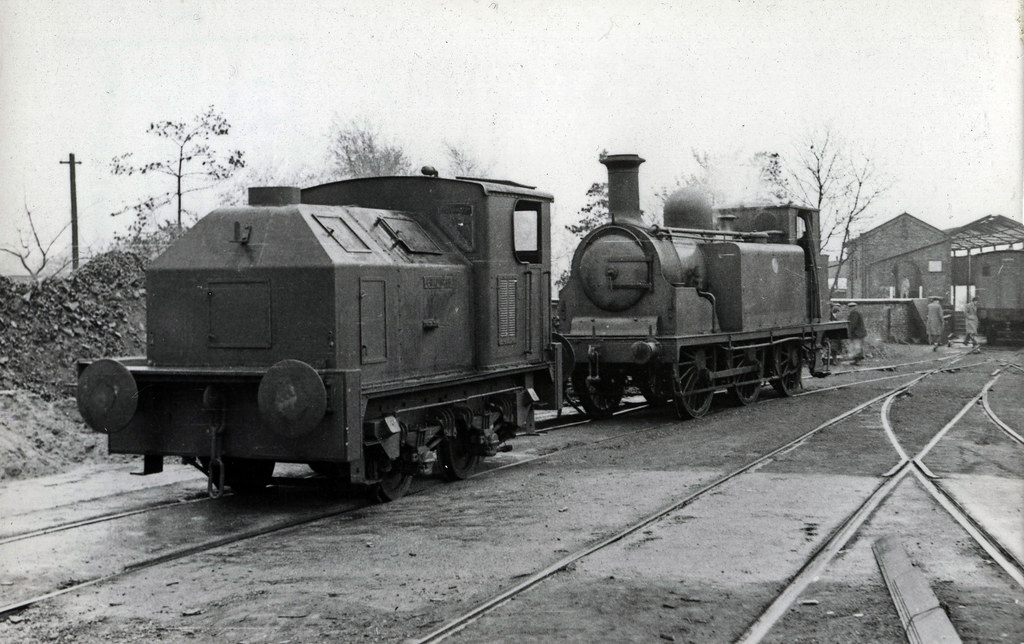AJC
Western Thunderer
The figures Dave? Off the front of the current BRM - they're scans of the editorial team which have come out a bit big.
I should paint them up.
Anyway, more Sentinel, following a day off - it's the end of the leave year and, what with one thing and another, I find myself at home on a weekday - and that obviously means wagons. And a bit of Sentinel work, cycling and some work on the house.
I shouldn't really be starting new projects, but here we are. A freebie from another the January Railway Modeller (also gone to recycling after a fairly cursory glance) in the form of a Ratio GW Mink which I thought should be better value than it turned out to be - my stash of spare underframes failed to yield anything suitable! So Parkside by PECO to the rescue! Some of these vans acquired BR-type axleguards in later life, perhaps when they were retro-fitted with vac' brakes? This one, for example:
GWR Vans - includes specialist designs
Unusually for such retro-fits, a reasonable number - this one for instance - acquired upright vac' brake stands: GWR Vans - includes specialist designs which I presume were second hand.

Note the platefront axleboxes (MJT) and the secondhand wheels from a mate whose current modelling has a P4 focus. Since I got to the Chiltern MRS show in Stevenage last weekend, it's joined on the bench by this PO open from Cambrian. This will be finished as one of ICI's extensive lime fleet, complete with sheet rail fittings (like these: ICI Buxton (Tunstead, etc) Railways in the 1960s - UK Standard Gauge Industrial Modelling). Some additional detailing to go on here:

And finally, for now, the Sentinel which has gained some handrails (0.3mm wire, N gauge handrail knobs) and had a hole cut in the floor - the boiler unit will be attached to a sub floor and bolted directly to the chassis. Why? Because with this type of roof, I think it's more important that it fits properly and stays in one piece. This idea is pinched from Mike Edge's designs for industrials - the only downside is that painting the inside of the cab will be a bit harder.

Another day off tomorrow, let's see what happens.
Adam
I should paint them up.
Anyway, more Sentinel, following a day off - it's the end of the leave year and, what with one thing and another, I find myself at home on a weekday - and that obviously means wagons. And a bit of Sentinel work, cycling and some work on the house.
I shouldn't really be starting new projects, but here we are. A freebie from another the January Railway Modeller (also gone to recycling after a fairly cursory glance) in the form of a Ratio GW Mink which I thought should be better value than it turned out to be - my stash of spare underframes failed to yield anything suitable! So Parkside by PECO to the rescue! Some of these vans acquired BR-type axleguards in later life, perhaps when they were retro-fitted with vac' brakes? This one, for example:
GWR Vans - includes specialist designs
Unusually for such retro-fits, a reasonable number - this one for instance - acquired upright vac' brake stands: GWR Vans - includes specialist designs which I presume were second hand.

Note the platefront axleboxes (MJT) and the secondhand wheels from a mate whose current modelling has a P4 focus. Since I got to the Chiltern MRS show in Stevenage last weekend, it's joined on the bench by this PO open from Cambrian. This will be finished as one of ICI's extensive lime fleet, complete with sheet rail fittings (like these: ICI Buxton (Tunstead, etc) Railways in the 1960s - UK Standard Gauge Industrial Modelling). Some additional detailing to go on here:

And finally, for now, the Sentinel which has gained some handrails (0.3mm wire, N gauge handrail knobs) and had a hole cut in the floor - the boiler unit will be attached to a sub floor and bolted directly to the chassis. Why? Because with this type of roof, I think it's more important that it fits properly and stays in one piece. This idea is pinched from Mike Edge's designs for industrials - the only downside is that painting the inside of the cab will be a bit harder.

Another day off tomorrow, let's see what happens.
Adam

 I would love a good quality post war 100hp Sentinel in 7mm scale but we don't do wish lists on WT so I have to bite my tongue when you post photos like this.
I would love a good quality post war 100hp Sentinel in 7mm scale but we don't do wish lists on WT so I have to bite my tongue when you post photos like this.  Do you think it is good enough to be scaled up to 7mm? I'd be quite happy with just a set of etchings - the castings I can make myself? I can but ask!
Do you think it is good enough to be scaled up to 7mm? I'd be quite happy with just a set of etchings - the castings I can make myself? I can but ask!






 Whittingham Hospital Railway
Whittingham Hospital Railway









